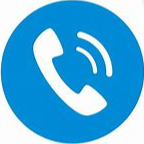Common Board Types for Home Decoration & Custom Furniture | Expert Guide
ReleaseTime: 2023-11-13
Board is commonly used in home decoration, especially nowadays many families like to make customized furniture, which enhances the effectiveness of board. Today, the editor of the proud home website is going to tell you about the relevant knowledge of boards. After reading this article, you can obtain a series of commonly used boards in our daily lives. Let's take a look together. Board core/substrate board core is actually divided into four categories (except for solid wood and non wood boards). Multilayer board/plywood, and fine board are commonly used in home decoration, especially now many families like to make some customized furniture, so the role of boards will be greater. Today, the editor of the proud home website is going to tell you about the relevant knowledge of boards. After reading this article, you can obtain a series of commonly used boards in our daily lives. Let's take a look together. The board core/substrate board core is actually divided into four categories (excluding solid wood and non wood boards): multi-layer board/plywood, blockboard/large core board, particleboard, and density board, which are respectively composed of four decreasing solid wood elements: solid wood board/sheet, solid wood strip/block, solid wood particles, and solid wood fiber/powder ↓↓↓↓
1. Multi layer board/plywood: Apply adhesive to solid wood veneer or thin board, place it perpendicular to each other in the direction of the wood grain, stack it layer by layer, and then heat press to form plywood. Common specifications include three millimeter board, five millimeter board, nine millimeter board, etc. (three, five, and nine refer to their thickness). Decorative panel with walnut veneer
2. Large core board/joinery board/joinery board: Cut wood into specific specifications of wooden blocks, and then use glue to splice them into a large board (some do not require glue, some tenon and joint with tenons, and some only use glue on 2-layer surface boards). Then, stick the surface board on the upper and lower sides, and heat press it to form. The interface is like a finger, so it is called a finger board. After the finger is connected, it can be coated on the side and cold pressed into shape, without any upper or lower surface plates.
3. Particleboard is a man-made board made of wood or other wood cellulose materials, which is synthesized by applying adhesive and hot pressing. It is also known as particleboard. There are many types of particle boards, which can be divided into single-layer structure particle boards, three-layer structure particle boards, gradient structure particle boards, directional particle boards, etc. according to their structure; According to surface condition, there are two types of veneer boards: untreated veneer board and veneer board (veneer board includes impregnated paper veneer board, veneer veneer board, PVC veneer board, etc.). Particle board has good toughness, bending resistance, and is not easy to break. It is suitable for making load-bearing cabinets, and its density is smaller than that of density board (as mentioned below), making it lightweight. Its waterproof performance is slightly better than that of density board because there is a force between the wood fibers, which absorbs water and expands to a certain extent before it no longer expands. Particle board is often used to make cabinets and wardrobes, but it is generally sufficient to have a melamine double finish on the surface and does not create various shapes such as carving. The shavings of Ousong board are relatively large, and there is no difference in thickness between the middle and the two sides. They are all pure wood chips. The so-called directional structure particle board refers to the vertical arrangement of the upper and lower layers of particle boards, the horizontal arrangement of the middle layer, and then hot pressing forming, with a thickness of generally 20 or more. Ousong board can be used as a base layer for background wall design in China, and the price is relatively expensive. Generally, it is rarely used in households.
▶ Hexiang board is a type of particle board. Its biggest feature is the use of very environmentally friendly MDI adhesive, which does not release formaldehyde (this adhesive can even be used in fields such as artificial blood vessels and refrigerator liners, but only Wanhua has the production qualification and capability of MDI). The raw material of Hexiang board is not sawdust but straw, which has better moisture resistance and flame retardancy than ordinary particle board.
▶ The raw materials for the Lushui River board are Northeast pine and hardwood from Changbai Mountain in Jilin Province. The adhesive used is melamine modified urea formaldehyde resin adhesive, which greatly reduces the release of formaldehyde.
Advantages of density board: smooth and flat surface, fine material density, stable performance, firm edges, and good surface decoration. Disadvantages: Poor moisture resistance, easy to absorb water and swell; The nail holding force is worse than that of particle board; Not suitable for load-bearing cabinets. Usage: Laminated wood flooring (high-density board), door panels (especially suitable for making stylish cabinet doors), partitions, furniture, etc.
▶ Aosong board is a medium density board imported from Australia.
▲ Various colors of fireproof boards
▶ The full name of melamine board/ecological board/paint free board/double decorative panel is: impregnated adhesive film paper veneer artificial board, which refers to soaking patterned decorative paper in melamine resin adhesive, drying and curing, and hot pressing on both sides of various board cores. Because it does not require painting on the surface when used (although there are several decorative panels that do not require painting~~), it is relatively more environmentally friendly, so it has the names of paintless board and ecological board. Ecological boards have the advantages of bright colors, relatively wear-resistant surfaces, and corrosion resistance, as well as the disadvantage of edge sealing and easy collapse. Commonly used in indoor buildings and decoration of furniture and cabinets, such as panels, walls, cabinet surfaces, cabinet layers, etc., it is not suitable for use on the ground.
▶ UV board UV board is a board that has undergone UV treatment. UV paint is a type of UV curing paint that is applied to various board surfaces and then dried by a UV curing machine to produce the board. The surface of the UV board is smooth, the paint film is full, the color is bright, and it is wear-resistant...
▶ The surface of the blister board substrate is vacuum molded or adopts a seamless PVC molding process. Currently, the materials used for blistering in the market mainly include ABS, PVC, PC, PS, etc.
According to GB18580-2017, for indoor boards, the formaldehyde release measured using the climate box method should be ≤ 0.124mg/m ³ It should be noted that although some furniture uses boards that meet the national standard E1, new formaldehyde may be introduced during the processing of plain boards due to painting and gluing. The edge sealing effect of the boards can also affect the release rate of formaldehyde, and the on-site processing and installation of furniture can also affect its environmental protection level. Therefore, measuring the environmental protection of a furniture solely based on the use of qualified plain boards is far from enough. However, there are many stages in furniture forming, but there is a lack of full process regulatory control. One way we can try to buy good things is to specify the environmental protection level in the contract and allow consumers to submit for inspection. If it is not qualified, what should be done to provide extra protection.







